Ficus pseudopalma is characterized by its large, glossy leaves that resemble the shape of a palm tree’s fronds.
These lush green leaves give the plant a vibrant and tropical appearance, making it a popular choice for indoor gardening enthusiasts. The foliage is dense and abundant, creating a visually striking and elegant display in any space.
Appearance of Ficus pseudopalma

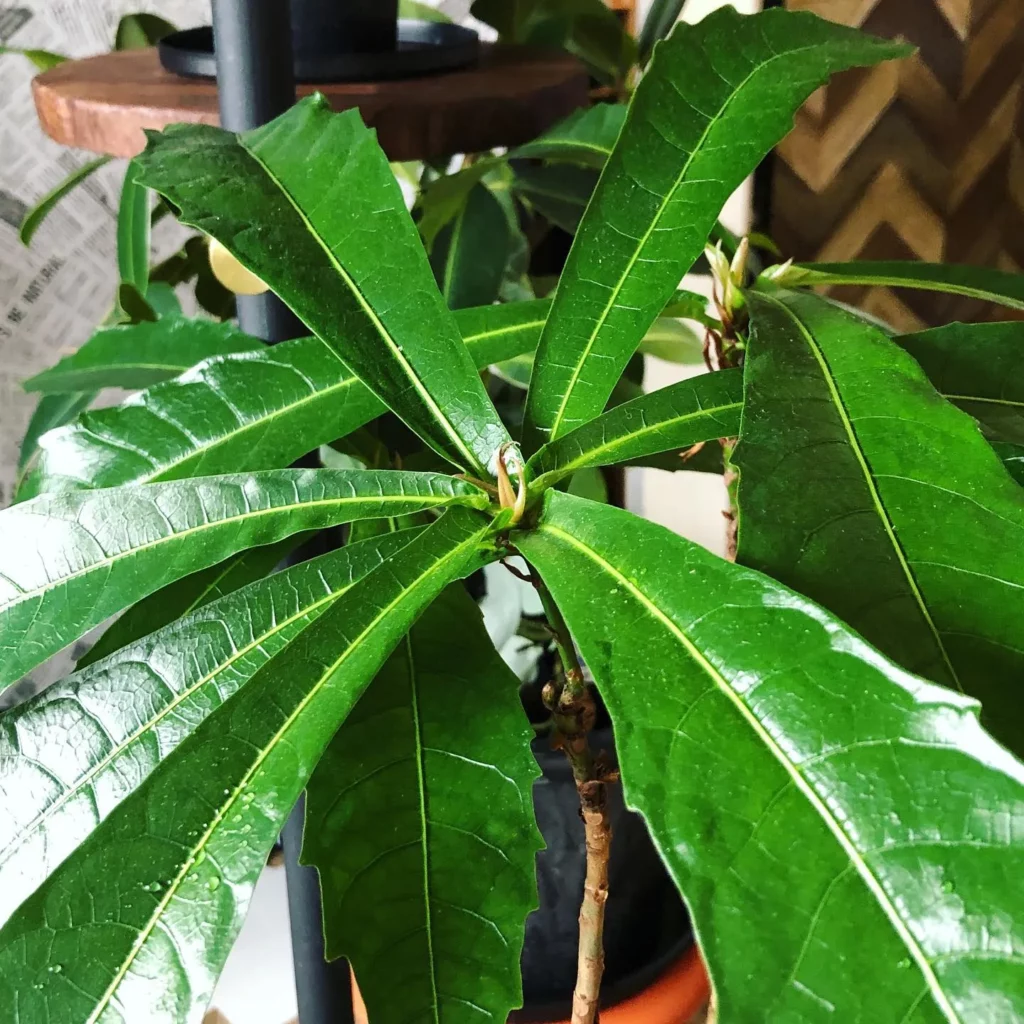

With each leaf growing up to several inches long, the Ficus pseudopalma creates a sense of grandeur and natural beauty. The leaves have prominent veins that add texture and depth to the overall appearance of the plant. Their glossy surface reflects light, creating a subtle shimmer that enhances the visual appeal.
When placed in a well-lit area, the Ficus pseudopalma thrives and showcases its stunning foliage to its fullest potential. The combination of its palm-like leaves and graceful growth habit makes it a true eye-catcher that adds a touch of tropical charm to any interior setting.
How To Grow Ficus pseudopalma
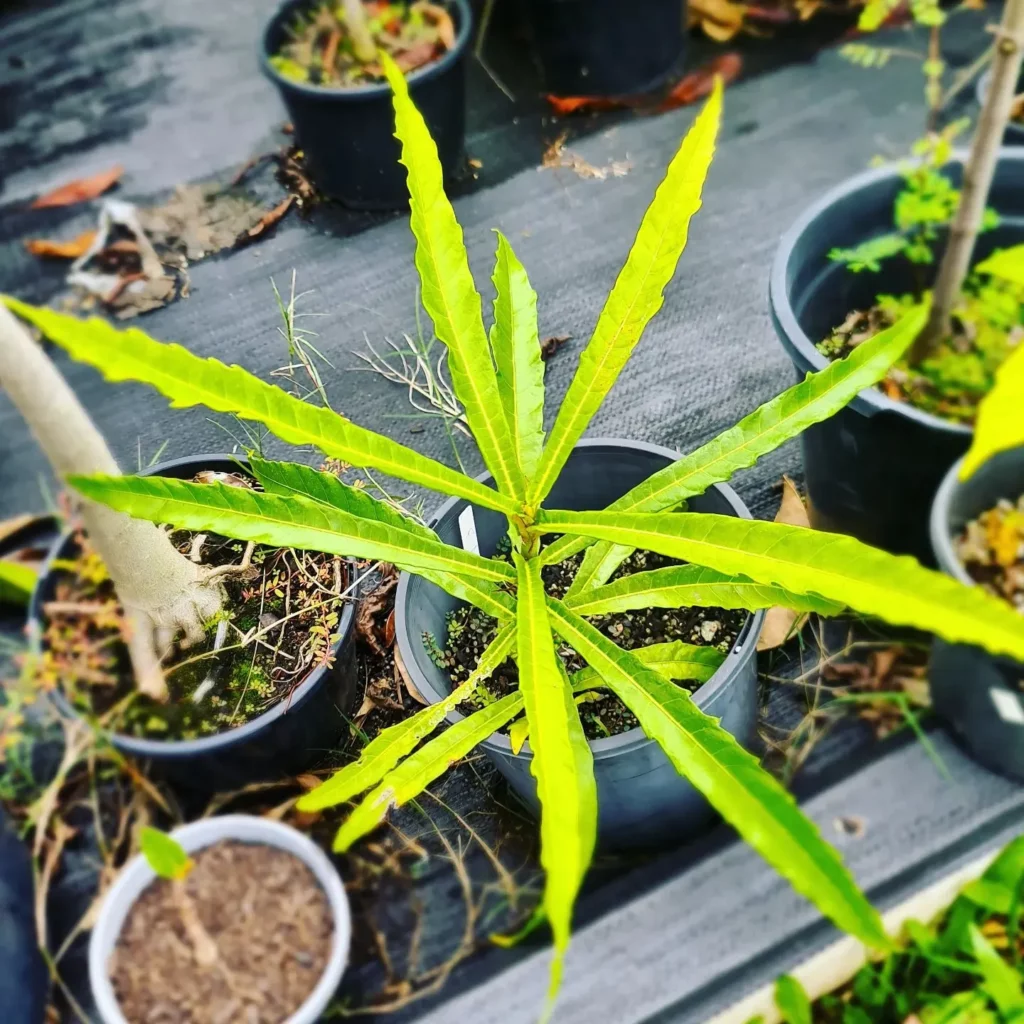
To grow a healthy Ficus pseudopalma, it’s important to provide it with the right conditions for optimal growth. The following care instructions will guide you in successfully nurturing your plant:
No products found.
- Lighting: Ficus pseudopalma thrives in bright, indirect light. Place it near a window where it can receive filtered sunlight or provide artificial light if natural light is limited.
- Soil: Use a well-draining potting mix that is slightly acidic. A mix of peat moss, perlite, and coarse sand works well to ensure proper drainage and aeration for the roots.
- Watering: During the growing season, water your Ficus pseudopalma regularly, keeping the soil consistently moist but not waterlogged. Allow the top inch of soil to dry out before watering again.
- Fertilizing: Feed your Ficus pseudopalma every two weeks during the growing season with a balanced liquid fertilizer. Dilute the fertilizer according to the package instructions and apply it to the soil.
- Pruning: Regularly prune your Ficus pseudopalma to maintain its appearance and promote healthy growth. Trim back any dead or yellowing leaves, as well as any branches that are overcrowding the plant.
- Propagation: If you wish to propagate your Ficus pseudopalma, you can do so through cuttings, roots, or air layering. Each method requires specific techniques, so choose the one that suits you best and follow proper propagation guidelines.
Propagation Tips for Ficus pseudopalma



Ficus pseudopalma, also known as the palm-leaf fig, can be propagated through various methods, including cuttings, roots, or air layering.
Each propagation technique has its own advantages and requirements, allowing you to choose the method that suits you best.
Cuttings: Propagating Ficus pseudopalma through cuttings is a popular method. To do this, take a stem cutting from a healthy plant, making sure it has two to four leaves.
Remove the lower leaves and dip the cut end in a rooting hormone. Place the cutting in a well-draining potting mix, keeping it moist but not overly wet. With proper care, roots will develop, and your new plant will be ready for transplantation in a few weeks.
Roots: Another way to propagate Ficus pseudopalma is through root cuttings. This method involves taking a section of the plant’s root and planting it in a separate container.
Make sure the root cutting has several nodes. Plant it horizontally in a well-draining potting mix, leaving the top of the cutting exposed. Keep the soil moist and provide the appropriate lighting conditions. Over time, new shoots will emerge from the root cutting, and you can transfer them to individual pots.
Air Layering: Air layering is a more advanced propagation technique but yields excellent results. To air layer a Ficus pseudopalma plant, select a healthy stem and make a small cut on the bark.
Apply a rooting hormone to the exposed area and wrap it with moist sphagnum moss. Cover the moss with plastic wrap to retain moisture. After a few weeks, roots will form, and you can carefully cut the stem below the root ball.
Plant the rooted stem in a pot filled with well-draining soil, and soon you’ll have a new Ficus pseudopalma plant.
Propagation Tips:
- Choose a healthy parent plant for propagation.
- Make clean cuts to prevent disease transmission.
- Use a well-draining potting mix to prevent waterlogging.
- Provide the appropriate lighting conditions for the newly propagated plant.
- Monitor moisture levels to ensure optimal root development.
Quick Care Overview for Ficus pseudopalma

Here’s a quick overview of the essential care requirements for your Ficus pseudopalma plant:
- Lighting: Ficus pseudopalma thrives in bright, indirect light. Place your plant near a window where it can receive plenty of natural light, but avoid direct sunlight, as it can scorch the leaves.
- Soil: Use a well-draining potting mix that is slightly acidic. A mix of peat moss, perlite, and sand will provide the ideal growing conditions for your Ficus pseudopalma.
- Watering: During the growing season, water your plant regularly, allowing the top inch of soil to dry out between waterings. Avoid overwatering, as it can lead to root rot.
- Fertilizing: Feed your Ficus pseudopalma every two weeks with a balanced fertilizer during the growing season. This will provide the necessary nutrients for healthy growth and vibrant foliage.
- Pruning: Regular pruning is essential to maintain the appearance of your Ficus pseudopalma. Trim back any leggy or overgrown branches to encourage bushier growth. Remember to use clean, sharp pruning shears to avoid damaging the plant.
- Propagation: If you wish to propagate your Ficus pseudopalma, you can do so through cuttings, roots, or air layering. Each method has its own requirements and techniques, so choose the one that suits you best.
- Pests and Problems: Keep an eye out for common pests such as scale, aphids, and mealybugs. Regularly inspect your plant for any signs of infestation or disease. If detected, take appropriate measures to control and treat the problem.
No products found.
Light Requirements for Ficus pseudopalma
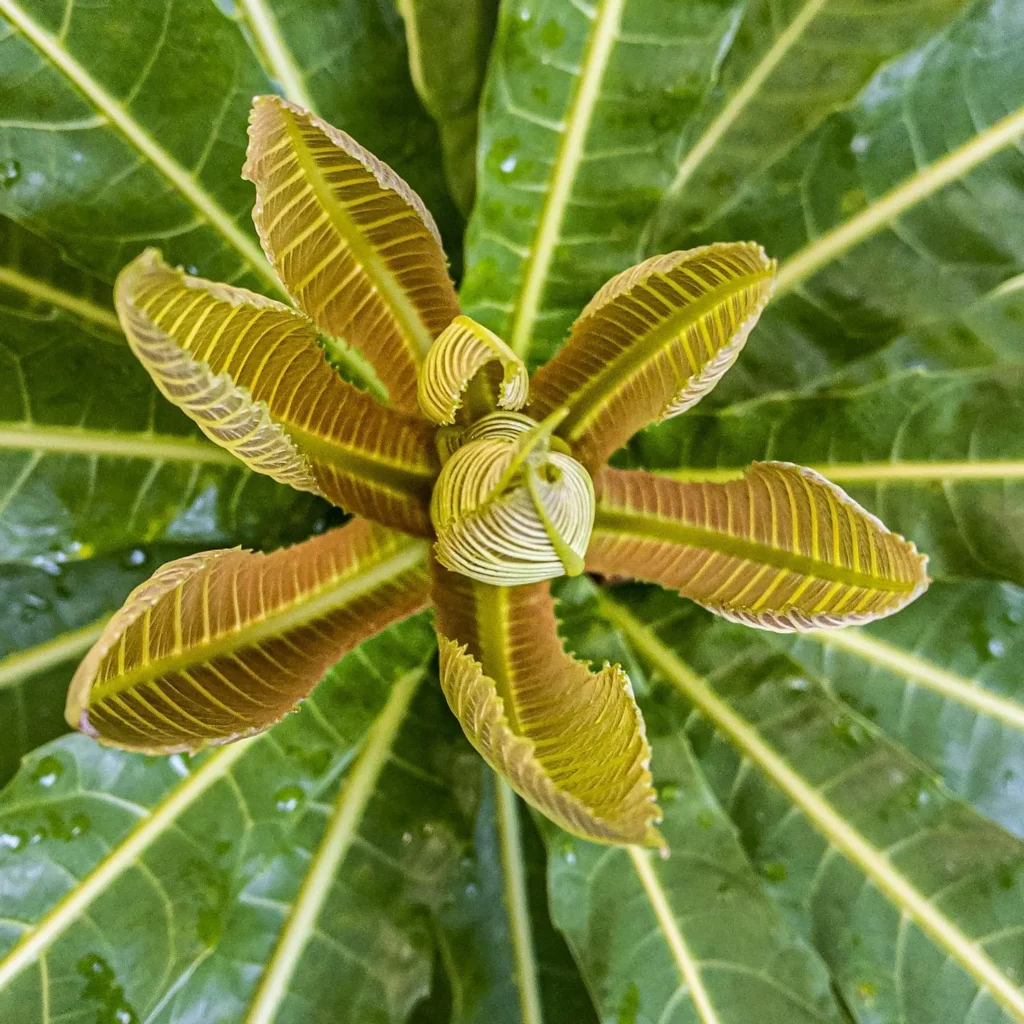

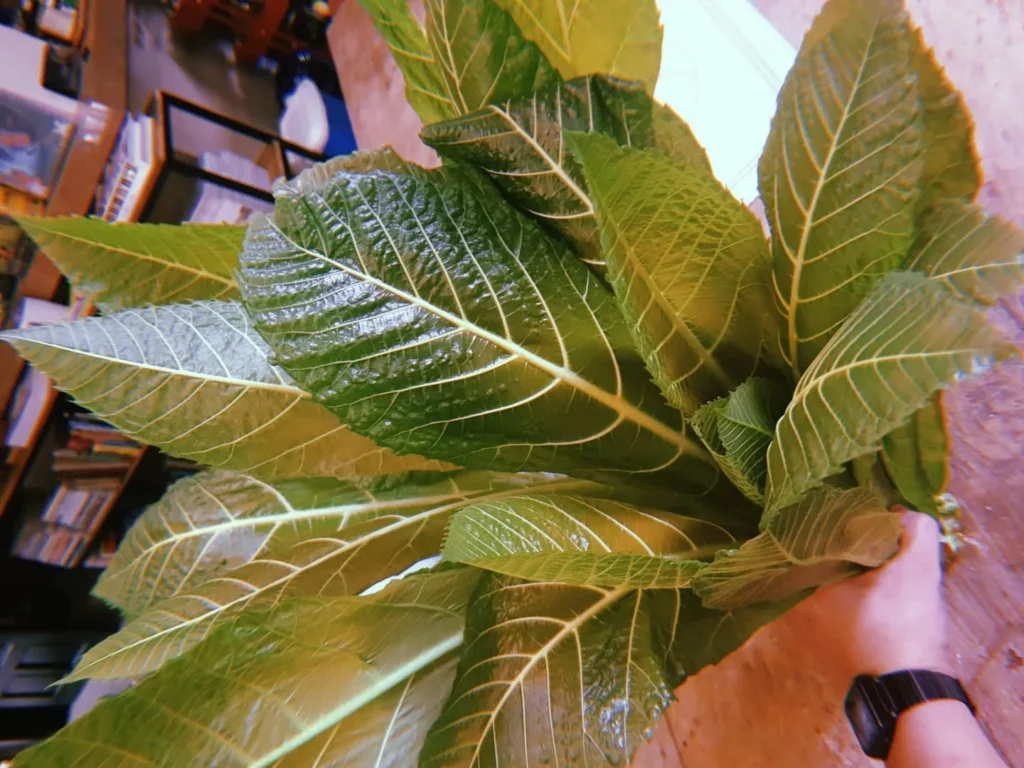
Ficus pseudopalma thrives in bright, indirect light, making it an excellent choice for indoor spaces. Placing your plant near a window with filtered sunlight or a few feet away from a south-facing window will provide the ideal lighting conditions.
It’s important to avoid placing the plant directly in the path of intense, direct sunlight as it can lead to leaf burn and damage.
One way to ensure your Ficus pseudopalma gets the right amount of light is by observing the color of its leaves. Healthy leaves should be a vibrant, deep green color.
If the leaves start to turn pale or yellow, it may be an indication that the plant is not receiving enough light. On the other hand, if the leaves become dark and dull, it could be a sign of too much direct sunlight.
Adjust the placement accordingly to maintain optimal lighting conditions for your plant.
If you’re unable to provide sufficient natural light, you can supplement it with artificial grow lights. LED lights with a spectrum similar to natural sunlight are a great option for indoor plant growth.
Place the grow lights a few feet above the plant and adjust the duration of light exposure based on the specific needs of your Ficus pseudopalma.
Soil Requirements for Ficus pseudopalma
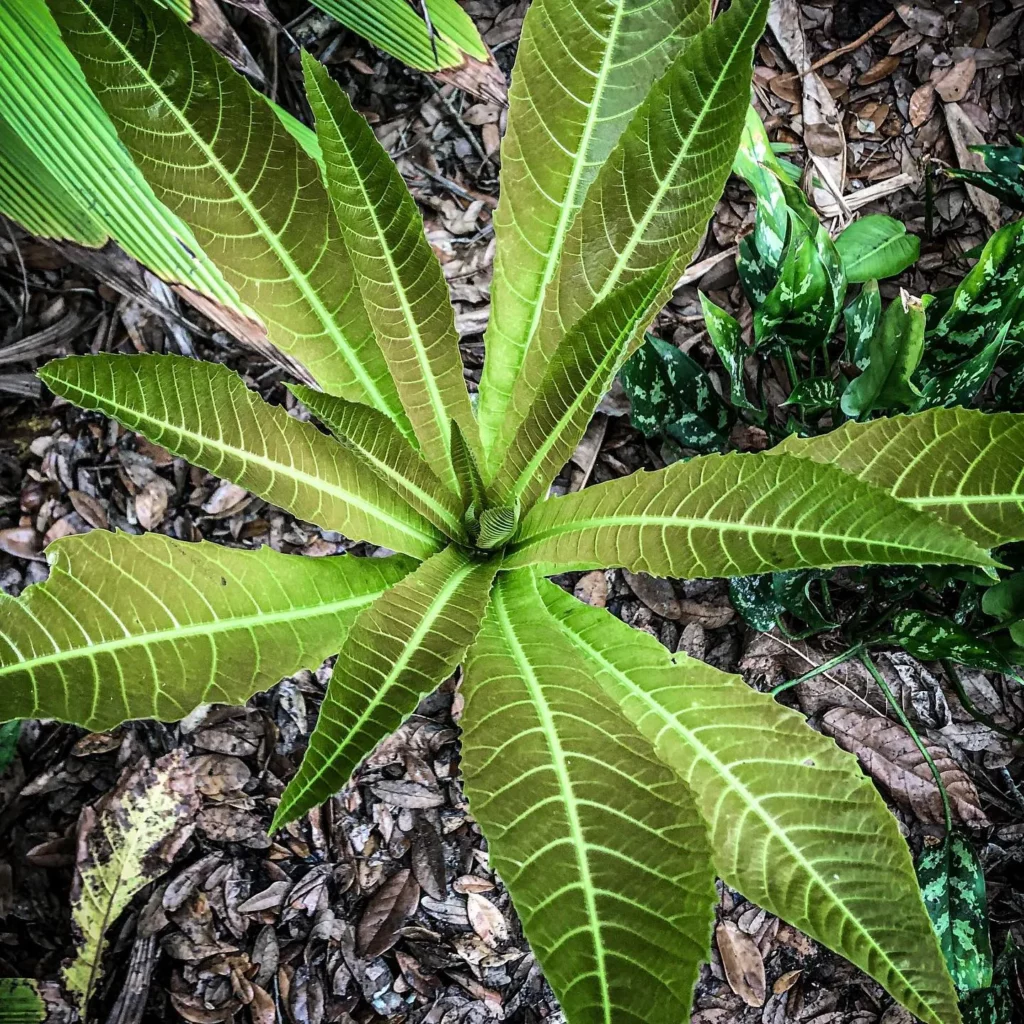
Ficus pseudopalma, also known as the palm-leaf fig, is a tropical plant that thrives in well-draining, slightly acidic potting mix. Choosing the right soil is crucial for the root development and overall health of your Ficus pseudopalma plant.
When it comes to potting your Ficus pseudopalma, opt for a high-quality potting mix that provides excellent drainage. This will help prevent waterlogged roots and the risk of root rot.
A mixture of peat moss, perlite, and vermiculite works well for creating a well-draining environment.
Potting and Repotting Ficus pseudopalma
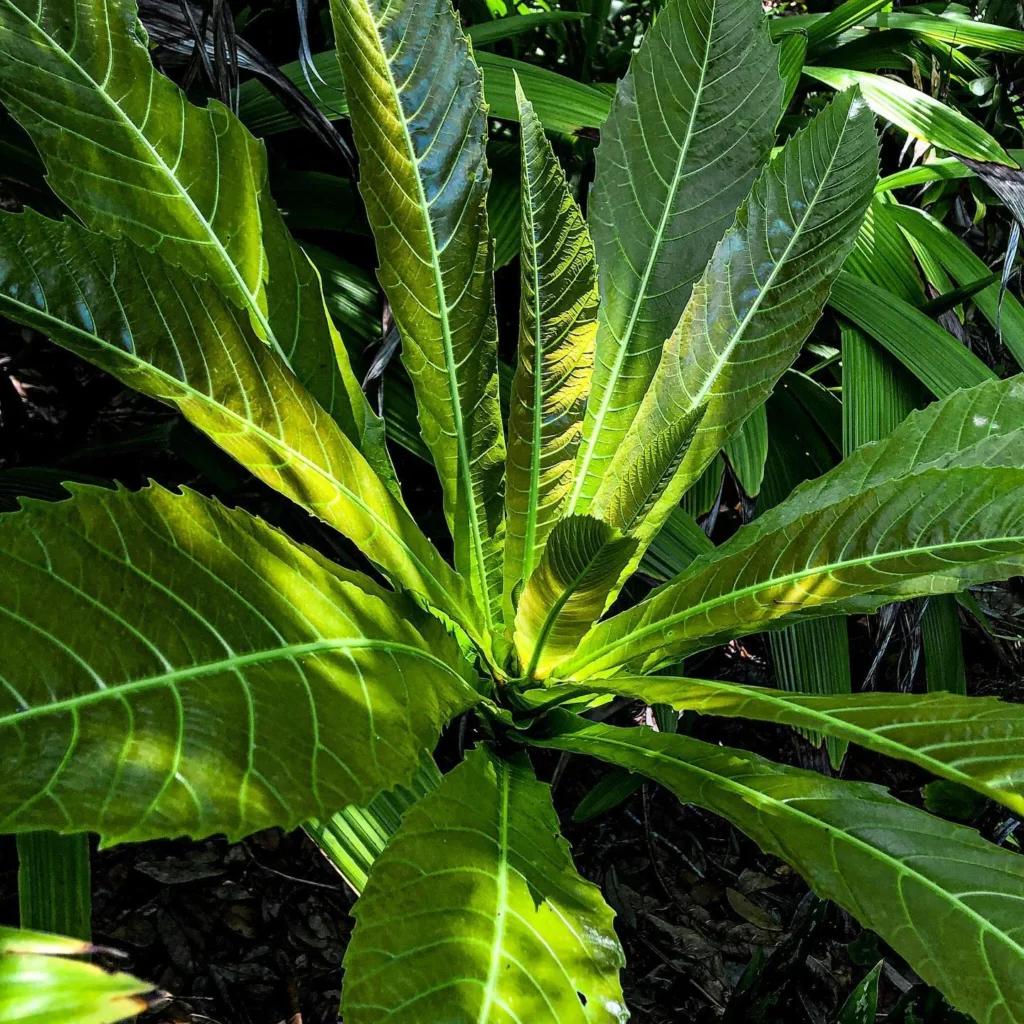
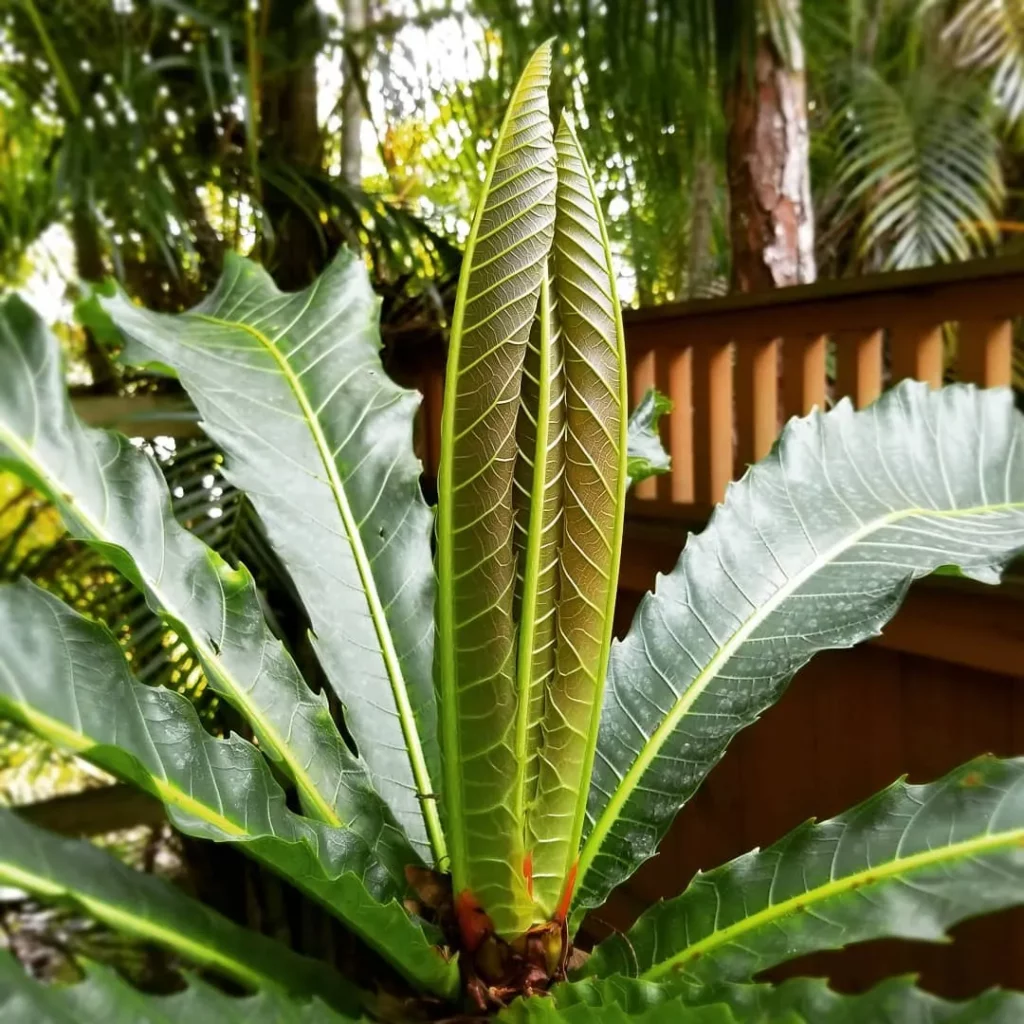

Providing the right pot and repotting your Ficus pseudopalma at the appropriate time are essential for its healthy growth. The choice of pot plays a significant role in the well-being of your plant.
No products found.
Opt for a pot that is slightly larger than the current one to allow room for growth, but not excessively large, as this can lead to waterlogging and hinder root development.
Additionally, ensure that your pot has drainage holes to prevent water accumulation, which can cause root rot.
Pot Sizes for Ficus pseudopalma
| Pot Size | Plant Size |
|---|---|
| 6 inches | Young plants or small specimens |
| 8-10 inches | Medium-sized plants |
| 12-14 inches | Large, mature plants |
Pruning and Shaping Ficus pseudopalma

Regular pruning and shaping are essential for maintaining the desired shape and size of your Ficus pseudopalma. It not only helps the plant look more aesthetically pleasing but also promotes healthy growth.
By removing dead or damaged leaves, you can improve the overall appearance of your plant and prevent the spread of diseases. Additionally, pruning allows for better air circulation and light penetration, which are crucial for the plant’s well-being.
When pruning your Ficus pseudopalma, it’s important to use clean, sharp pruning shears to make clean cuts and minimize the risk of infection. Start by removing any dead, yellow, or discolored leaves, as well as any branches that are crossing or touching each other.
Aim to create an open, balanced structure, with the main focus on maintaining the desired shape and size of your plant.
Shaping your Ficus pseudopalma can be a creative process. You can choose to train it into a desired form, such as a bushy shrub or a compact tree. Regularly pinching the soft tips of the branches can encourage branching and create a fuller appearance.
Temperature Requirements for Ficus pseudopalma
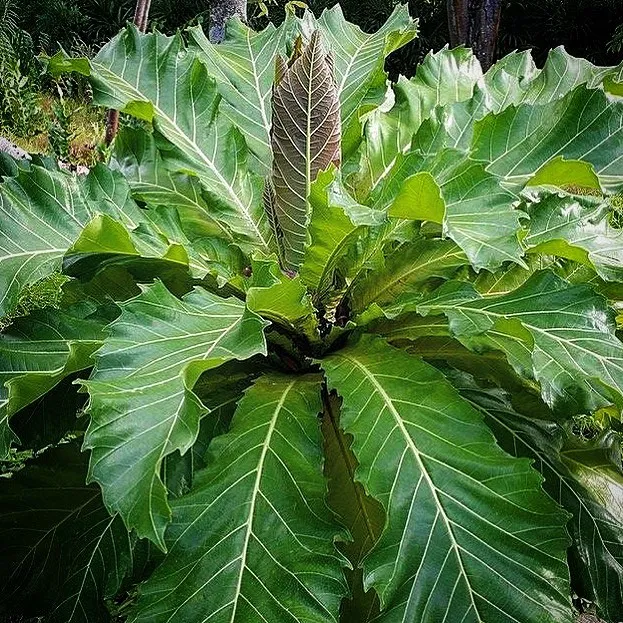
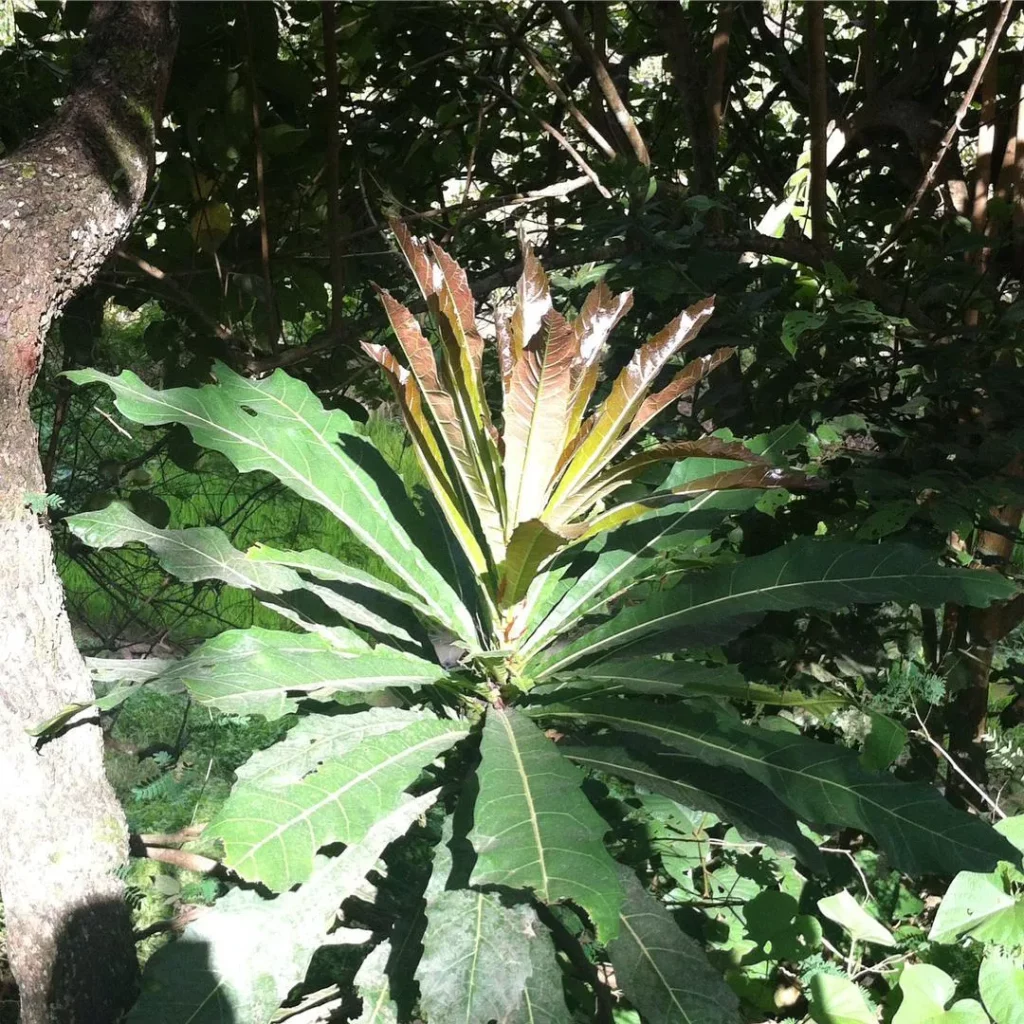
Ficus pseudopalma prefers average room temperatures between 60-75°F (15-24°C). Maintaining a consistent temperature within this range is essential for the plant’s overall health and growth.
Fluctuations in temperature can cause stress and hinder its development, so it’s important to provide a stable and comfortable environment.
To ensure your Ficus pseudopalma thrives, avoid exposing it to extreme temperatures or drafts. Cold drafts from windows or doors can be especially harmful. Additionally, keep the plant away from heating vents or radiators, as overly dry air can negatively affect its well-being.
If you’re unsure about the temperature in your home, consider using a thermometer to monitor the conditions near your Ficus pseudopalma. This can help you make any necessary adjustments to maintain the ideal temperature range for optimal growth.
Humidity Requirements for Ficus pseudopalma
Ficus pseudopalma thrives in moderate to high humidity, mimicking its natural tropical habitat. Providing the right level of humidity is essential for the plant’s overall health and growth.
Here are some important considerations when it comes to maintaining the proper humidity for your Ficus pseudopalma:
- Humidity level: Aim for a humidity level between 50% and 70%. You can achieve this by increasing the ambient humidity in the room where your plant is located.
- Misting: Regularly misting the leaves of your Ficus pseudopalma can help increase humidity levels. Use a spray bottle to gently mist the foliage, making sure to avoid excessive water on the soil.
- Humidity tray: Placing your Ficus pseudopalma on a tray filled with water and pebbles can create a microclimate that increases humidity around the plant. As the water evaporates, it raises the humidity level in the immediate vicinity.
- Grouping plants: Grouping your Ficus pseudopalma with other plants can create a microclimate of increased humidity. The plants release moisture through transpiration, creating a more humid environment.
Watering and Fertilizing Ficus pseudopalma
Regular watering and proper fertilization are essential for the healthy growth of your Ficus pseudopalma. This tropical plant thrives in moist but well-drained soil.
| Watering Tips: | Fertilizing Tips: |
|---|---|
| – Check the top inch of soil, and water when dry | – Use a balanced liquid fertilizer |
| – Provide a thorough soak, allowing water to run through the drainage holes | – Feed every two weeks during the growing season |
| – Discard excess water from the saucer to prevent waterlogging | – Follow package instructions for proper dilution |
Pest Control and Common Problems for Ficus pseudopalma
Ficus pseudopalma can face pest infestations such as scale, aphids, and mealybugs, as well as common problems like root rot. It’s important to stay vigilant and address these issues promptly to keep your plant healthy and thriving.
| Pest | Symptoms | Treatment |
|---|---|---|
| Scale | Small bumps on the leaves or stems, sticky residue | Use a soft brush to remove the scales or apply horticultural oil |
| Aphids | Clusters of small insects on new growth, distorted leaves | Use a strong jet of water to dislodge the aphids or apply insecticidal soap |
| Mealybugs | White, cottony masses on leaves or stems, sticky residue | Use a cotton swab dipped in rubbing alcohol to remove the mealybugs or apply horticultural oil |
In addition to pests, Ficus pseudopalma can also be susceptible to root rot, especially if the soil is constantly waterlogged. To prevent root rot, ensure your plant is in a well-drained potting mix and water only when the top inch of soil is dry. Overwatering can suffocate the roots and create the perfect conditions for fungal growth.
Regularly inspect the roots for any signs of rot, such as discoloration, mushy texture, or a foul smell. If you suspect root rot, gently remove the plant from its pot and trim away any affected roots.
Repot the plant in fresh, well-draining soil and adjust your watering habits accordingly.
By staying proactive and addressing these common problems, you can ensure the health and vitality of your Ficus pseudopalma plant for years to come.
Make sure to check out our article on Ficus Palmeri Care Guide. And after reading that Ficus article, check out our article on Ficus Variegata Care Guide.
Conclusion
As you conclude this comprehensive guide, you are now equipped with all the knowledge and techniques to care for your Ficus pseudopalma plant successfully.
From lighting and soil requirements to watering and fertilizing tips, you have a solid foundation for providing optimal conditions for your plant’s growth. Regular pruning will help maintain its appearance and promote healthy development.
Propagation can be an exciting way to expand your Ficus pseudopalma collection, and you have learned about various methods such as cuttings, roots, and air layering.
By following the instructions provided, you can confidently propagate your plant and share its beauty with others.
It’s important to be aware of common pests like scale, aphids, and mealybugs, which can affect your Ficus pseudopalma. Regular inspection and prompt action are key to preventing infestations and addressing any problems that may arise.
Additionally, ensuring proper drainage and avoiding overwatering will help prevent root rot, a common issue for this plant.
By implementing the tips and techniques outlined in this guide, you can create a thriving environment for your Ficus pseudopalma. Remember to regularly assess its lighting, soil moisture, and overall health, adjusting care as needed. Your dedication and attentiveness will ensure that your Ficus pseudopalma plant remains vibrant, lush, and a beautiful addition to your indoor garden.
FAQ
Q: What kind of lighting does Ficus pseudopalma prefer?
A: Ficus pseudopalma prefers bright, indirect light.
Q: What type of soil is best for Ficus pseudopalma?
A: Ficus pseudopalma thrives in well-draining, slightly acidic potting mix.
Q: How often should I water my Ficus pseudopalma?
A: During the growing season, Ficus pseudopalma should be watered regularly, allowing the top inch of soil to dry before watering again.
Q: How often should I fertilize my Ficus pseudopalma?
A: Ficus pseudopalma should be fertilized every two weeks during the growing season with a balanced fertilizer.
Q: How should I prune my Ficus pseudopalma?
A: Regular pruning is recommended to maintain the appearance of Ficus pseudopalma. Remove any dead or damaged leaves and trim back overgrown branches.
Q: How can I propagate Ficus pseudopalma?
A: Ficus pseudopalma can be propagated through cuttings, roots, or air layering.
Q: What are common pests that affect Ficus pseudopalma?
A: Common pests that affect Ficus pseudopalma include scale, aphids, and mealybugs.
Q: Is Ficus pseudopalma susceptible to root rot?
A: Yes, Ficus pseudopalma can be susceptible to root rot. It is important to choose a well-drained potting mix and water only when the top inch of soil is dry.
Q: Why is regular inspection of my Ficus pseudopalma important?
A: Regular inspection of your Ficus pseudopalma is recommended to catch any problems, such as pest infestations or disease, early and address them promptly.





